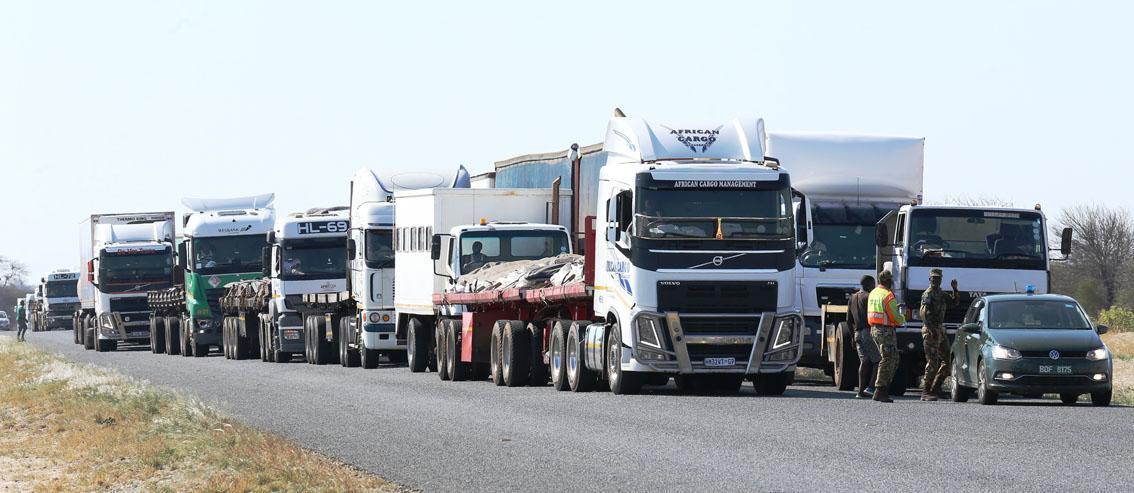Africa-Press – Botswana. The Kazungula Border Post, connecting Botswana and Zambia, is one of Southern Africa’s most important trade gateways. It links Botswana to the North-South Corridor, facilitating trade between the Southern African Development Community (SADC) region and central Africa. Despite its strategic importance, traders continue to face several challenges that slow down operations, increase costs, and reduce competitiveness.
The border post was designed as a One-Stop Border Post (OSBP) to simplify trade. It replaced the old ferry system with the Kazungula Bridge, which opened in 2021. The goal was to improve cargo flow, reduce delays, and strengthen regional integration. However, many logistical and administrative issues still affect efficiency at the crossing.
One of the main challenges is customs clearance delays. Traders often report long waiting times for document processing. The two countries use different customs systems, and electronic integration is not yet seamless. This creates confusion, especially for transporters unfamiliar with the digital submission process. Manual inspections and system downtime also contribute to backlogs, which can stretch clearance times to several hours or even days.
Another issue is high border charges and operating costs. Transporters pay various fees, including bridge tolls, road levies, and border handling charges. Fuel costs add further pressure, especially for long-haul truckers traveling between ports in South Africa and destinations in Zambia or the Democratic Republic of Congo. Small traders, who rely on cross-border buying and selling, often struggle to afford these costs, reducing their profit margins.
Infrastructure constraints also affect trade flow. Although the bridge is modern, support facilities such as parking bays, inspection areas, and rest zones are limited. During peak periods, trucks queue for kilometers, causing congestion. The lack of shaded waiting areas and basic amenities makes it difficult for drivers and customs officials to operate comfortably.
Inconsistent border operating hours and differences in procedures between Botswana and Zambia add to the problem. While the OSBP framework aims for joint processing, some functions are still handled separately by each country. This means that traders must often repeat checks and document verifications on both sides, slowing down the process. Harmonization of working hours, inspection procedures, and data systems remains incomplete.
Corruption and informal payments also pose challenges for some traders. Reports of officials requesting small bribes for faster service undermine transparency and discourage smaller businesses from using the route. Such practices increase the cost of doing business and create uncertainty for traders who want predictable clearance times.
Limited border management capacity is another factor. Staffing shortages during weekends and public holidays cause slow processing. The high volume of trucks, especially those carrying mining products, fertilizers, and fuel, can overwhelm available personnel and inspection infrastructure.
Security and theft risks also affect trade. Truck drivers sometimes report incidents of cargo theft or harassment while waiting in queues near the border. Inadequate lighting and limited surveillance around parking zones make goods vulnerable, especially at night.
Regional coordination remains a key challenge. The Kazungula Border Post serves not just Botswana and Zambia but also connects regional traffic from Zimbabwe, Namibia, and South Africa. Differences in customs procedures, documentation requirements, and vehicle standards among these countries create confusion. Truckers moving through multiple jurisdictions must adapt to varying regulations, adding time and complexity to their journeys.
Despite these issues, the Kazungula Border Post still holds strong potential. The facility is modern, strategically located, and supported by both governments and regional development agencies. For it to reach full efficiency, authorities must address system integration, infrastructure expansion, and staff training. Simplifying cross-border data sharing between Botswana Unified Revenue Service (BURS) and the Zambia Revenue Authority (ZRA) would reduce clearance times significantly.
The private sector also has a role to play. Logistics companies and freight forwarders can invest in digital customs solutions, route planning tools, and driver welfare programs to improve turnaround times. Collaboration between the public and private sectors can help identify bottlenecks and develop practical solutions.
The Kazungula Border Post represents a major step toward regional trade integration, but challenges remain. Addressing delays, harmonizing systems, and improving infrastructure will determine whether it becomes the efficient trade hub it was meant to be. For now, traders passing through still face a mix of opportunities and obstacles that reflect the broader realities of cross-border commerce in Southern Africa.
For More News And Analysis About Botswana Follow Africa-Press






